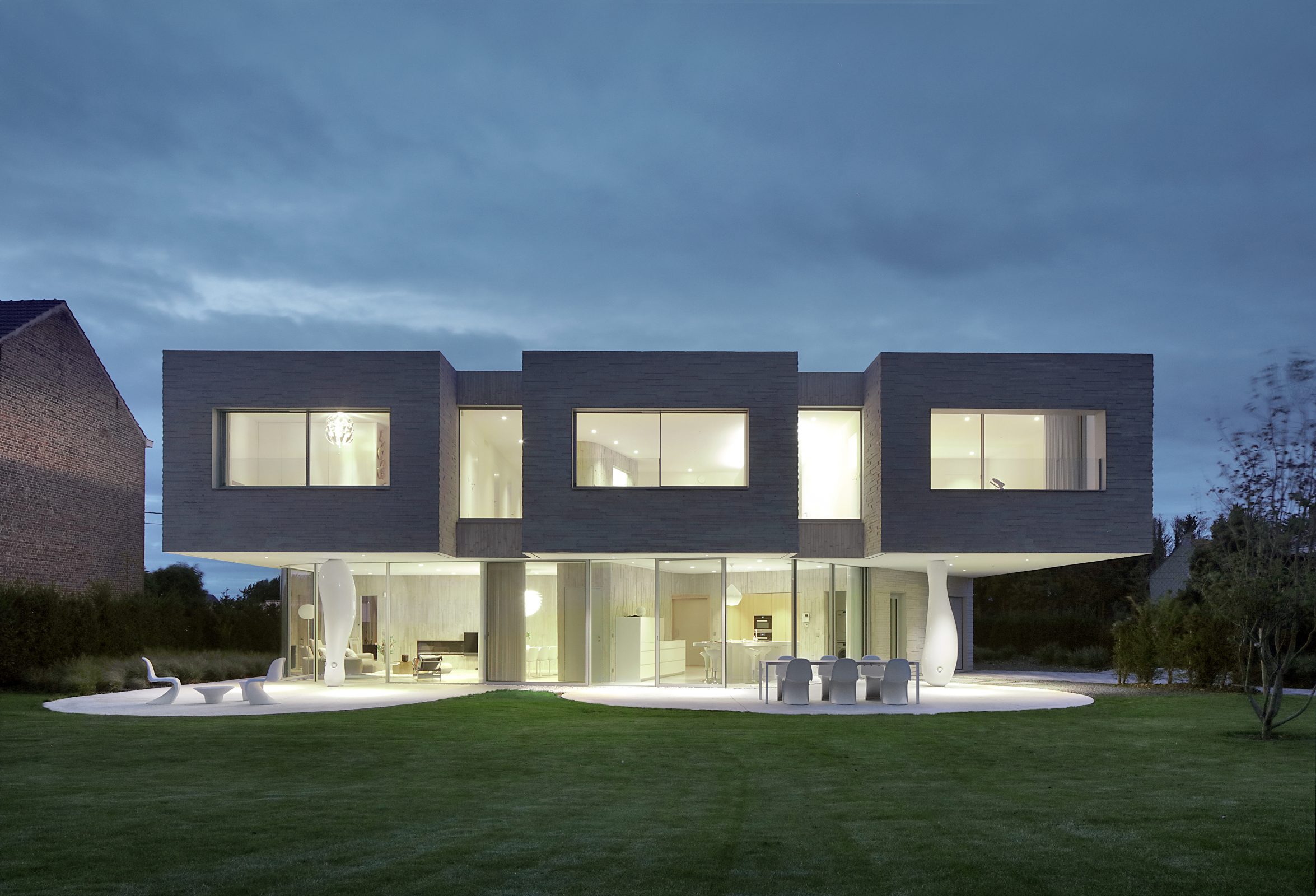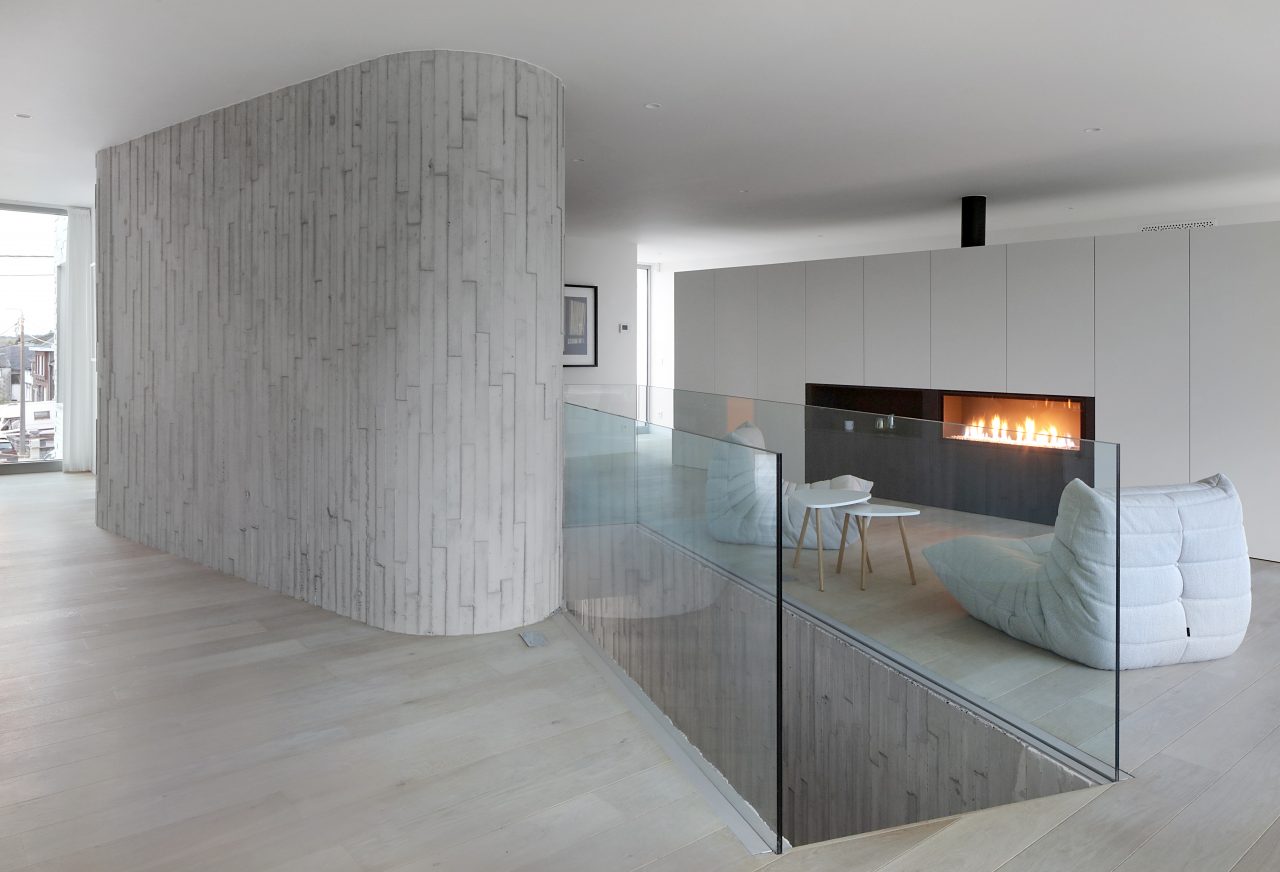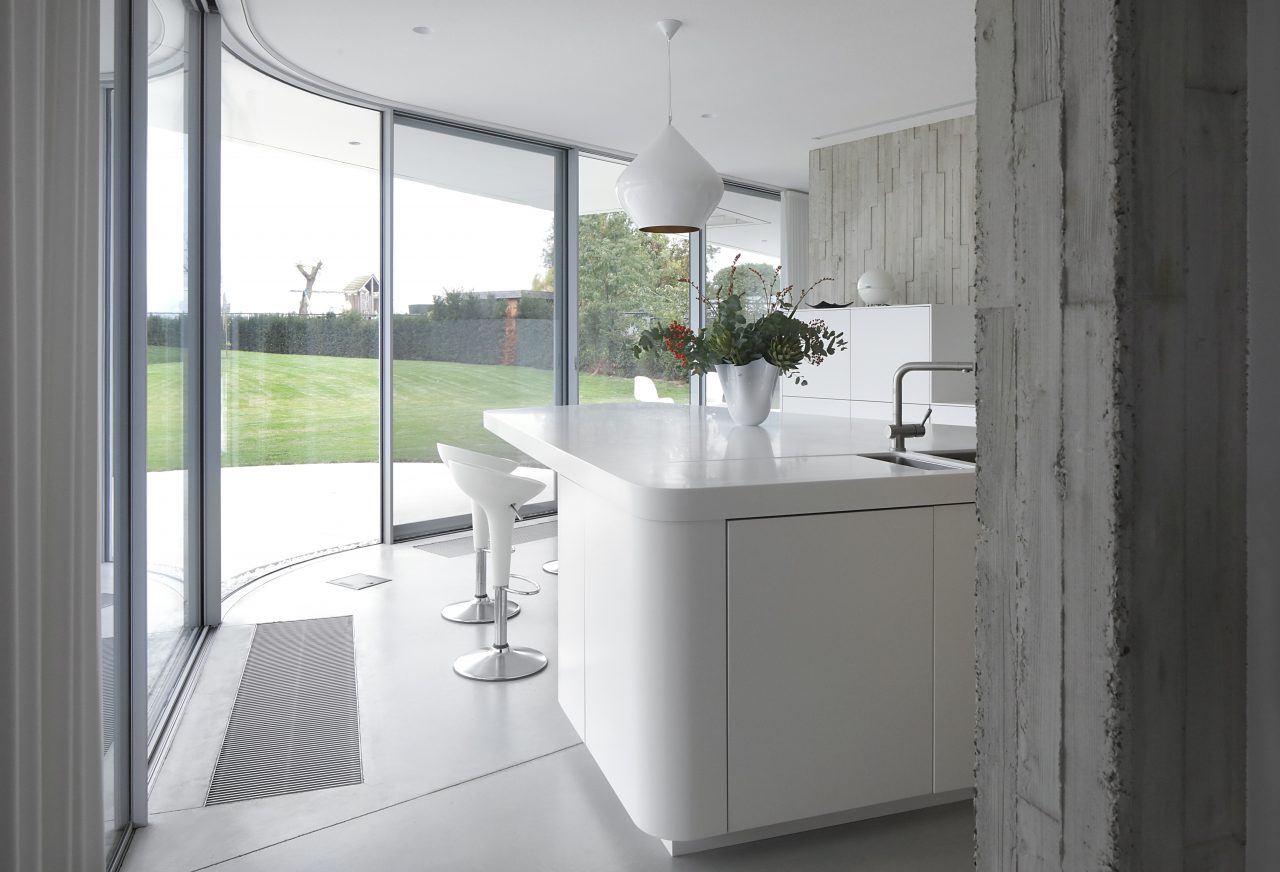Flanders Suburban Villa

This private home in Flanders is an excellent case of contemporary suburban living and building. The building is situated to take advantage of the garden and rural landscape beyond. The house is made largely of curvilinear glass and site-cast concrete from shipbuilding quality wooden formwork. The texture and horizontal rows of the concrete façade reference the brickwork common in Flanders. The weight of the upper blocks with relation to the curvilinear glass wall is visually balanced by two expressive and large shapely columns that structurally and aesthetically support the weight of the concrete blocks. The columns are seen artistically as organic shapes, sensual forms that mediate between the two levels and the inside/outside relationships between the house and the landscape.
A curvilinear glass façade leaves open privileged and extended views to the calm and private back yard garden and rural landscape beyond. The main shared zones (entry hall, kitchen, living room, and office space) are positioned on the first level, whereas the bedrooms and secondary shared zones are on the second. The second level spaces are arranged into three identically proportioned solid rectilinear blocks. The eccentricity between the two-floor plans creates fluid living spaces and large covered terraces on the ground level, while the upper level is more austere, and demarcates efficient living quarters, bathrooms, and storage closets. Two carports provide a barrier from the street and public life.
The cast in place concrete formwork is treated with exceptional care and detail. Short wooden planks, with offset arrangements, are a modern interpretation of two traditional techniques: 1. Shipbuilding, i.e., the outer layer of wooden hulls, 2. Stretched brick courses in the Flemish bond. This dual interpretation was discussed during the design process using Umberto Eco’s concept of “Operta Aperta” or “Open Work”. Eco stated that the essence of a modernist (art) work lies in the fact that it has a level of abstraction allowing for multiple interpretations.


ELEMENTS - ORGAN COLUMNS
Two expressive and large, shapely columns support the weight of the concrete blocks of a villa. The columns are seen artistically as organic shapes, sensual forms that mediate between the two levels and the inside/outside relationships between the house and the landscape.
The column wrappers were modeled through parametric design processes and hand-molded in halves at a workshop for technical accuracy. The halves were then delivered to the site and installed around center column beams.
They are menhirs, we call them organs (kidney, liver,…), and the client sees them like peanuts. Their abstract, sensuous, forms cover the inner utilitarian columns with a gentle, attractive shape. They are at once flowing with organic principals of form, and installed, fake and synthetic, adding contrast to the blocks they support and play beneath.
Location
Landen, Belgium
Year
2012 - 2017
Area
450 m2
Team
Alexander D’Hooghe, Luk Peeters, Wim François, Larisa Ovalles
Clients
Private
Mission ORG
Architecture design, Construction
Image / Photo credits
Wim Francois
Program
Residential
Collaborators
UTIL




